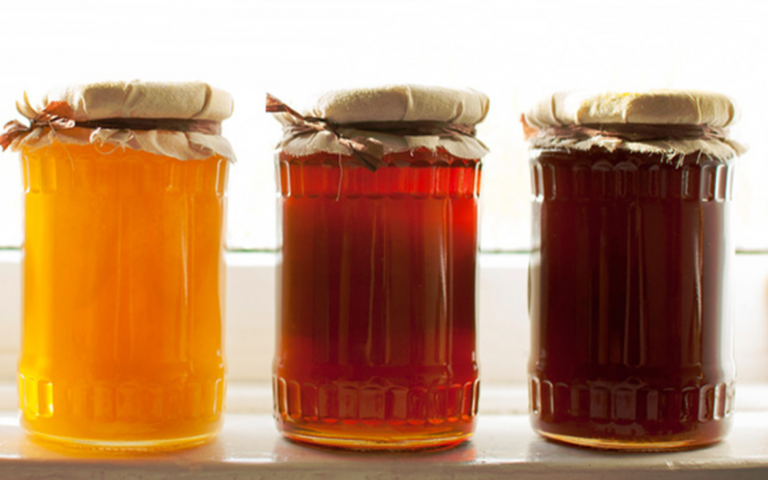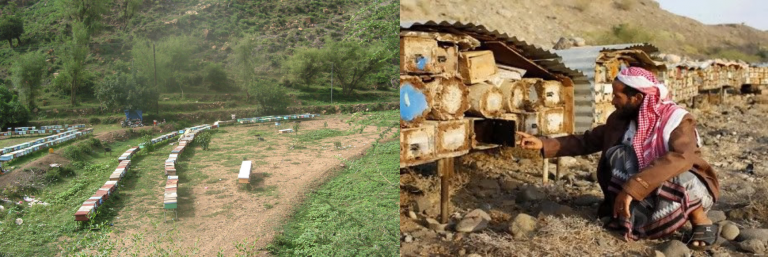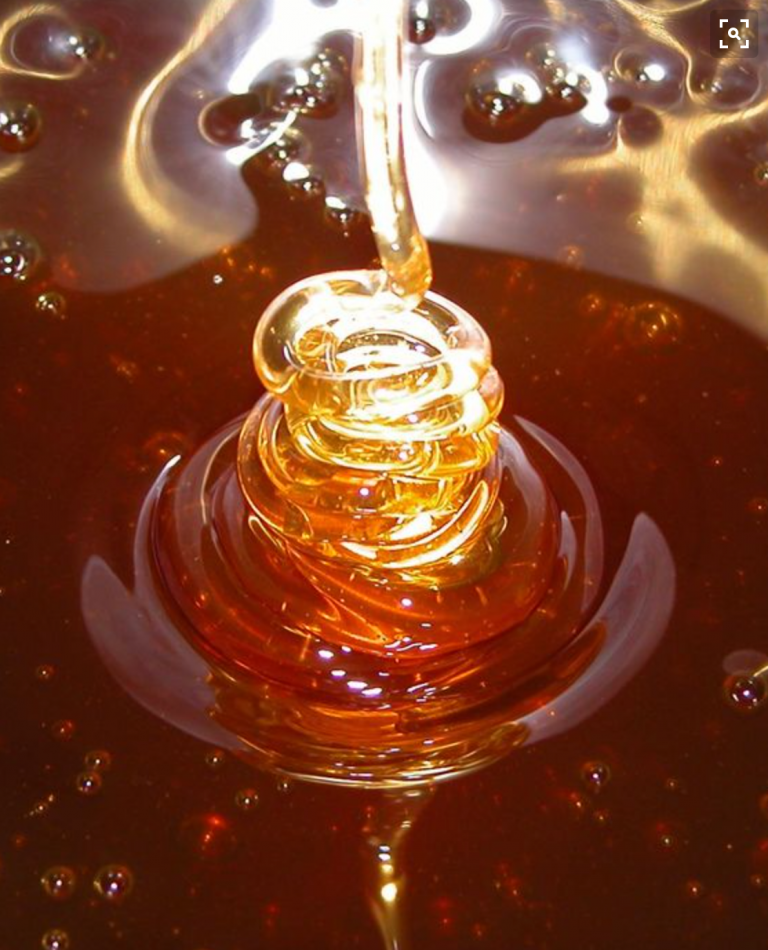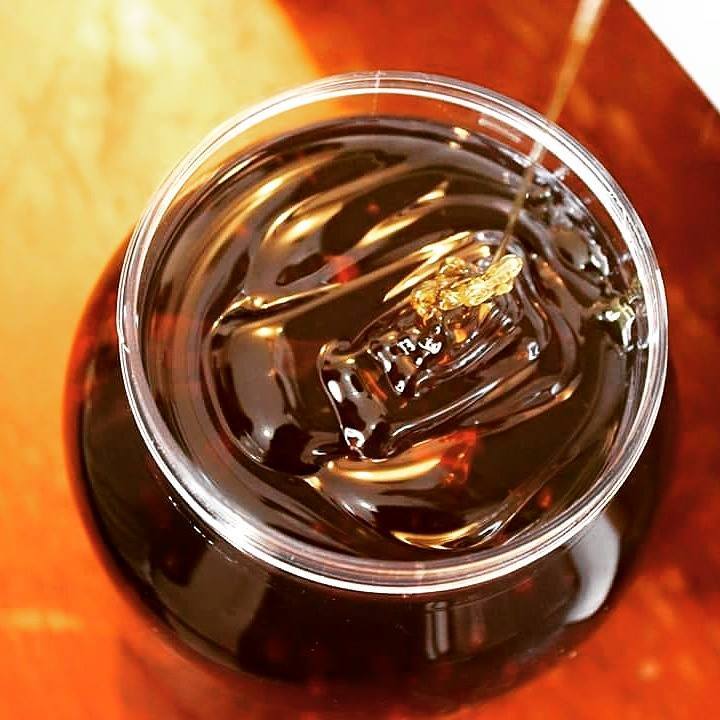
We all know the benefits of honey. It’s anti-bacteria and anti-fungal. Since the Prophet’s (s.a.w.s) time, honey was known not only to to be medicinal but healing. From its ability to reduce stomach ulcers, honey was often used to cure tummy aches. In the hadith and Qur’an, this is said about the liquid gold:
“And Your lord inspired the bee, to build your dwellings in hills, on trees, and in (human’s) habitations. Then, to eat of all the produce and follow the ways of your Lord made easy. There comes forth from their bodies a drink of varying color, wherein is healing for men: Verily, in this is a sign for those who give thought.” [Qur’an 16:68-69)
Abu Sa’id and Al-Bukhari has transmitted that a certain man came to the Prophet (s.a.w.s) and said, “Truly, my brother’s stomach is upset.” The Prophet replied, “Make him have some honey.” So the man’s brother went away. Again he came, and said, “I have given it to him to eat, but he is not any better.” The same thing happened again twice more. On both the third and fourth occasions, the Prophet (s.a.w.s) said, “Allah is the truth – and the belly of your brother has lied!” So he gave him honey to eat yet again, and then he was cured.
It is known that the Prophet (s.a.w.s) himself loved honey as a sweet treat! Al-Bukhari has recorded this hadith: ‘Ayesha, may Allah be please with her, said, “The Prophet (s.a.w.s) loved sweets and honey.”
Today, it is common to find honey in the kitchen cupboards where our moms and grannies keep so preciously for its use including cooking. However, bear in mind there have been many cases of synthetic honey in the market. Corn syrup or other concentrated high-fructose are added in the cultivation process, making these commercially-processed honey unauthentic. Some processes included heated honey at high temperatures before being sold. Obviously, such processes destroy the wealth of nutrients. So of course, real honey is always recommended. Real honey, real healing.
Yemen Honey

Right: Honey fresh from the hives, a beekeeper harvests the highly demanded Sidr honey twice a year – once in summer and another in winter. Photo: Al Masoud Trading
Honey from Yemen is the most sought after in the world. It comes with the price too. Nomadic artisan beekeepers of the Hadramaut Mountains in the southwestern Arabian Peninsula would tell you that the honey is manufactured by bees. They eat only the pollen of the Sidr tree where the honey is then harvested only twice a year – once in the summer and another in the winter.
The Sidr tree is an ancient tree and the tradition of beekeepers venturing up into the valley to gather the prized liquid has been going on for decades. Also known as Lote tree, Christ’s Thorn, Jujube or Nabkh tree, the sidr tree itself is medicinal. Its leaves rich in Calcium, Iron, and Magnesium are used as an herbal shampoo to treat dandruff and head lice. Its wood ash is used for the treatment of snakebites. Its fruits are found to have a very high energy value. Its seeds are rich in protein and its root, stem bark are also used in various medicinal preparations.
The Sidr tree, along with the climate in the Arabian Peninsula, as well as the mineralised soil of the Doan Valley creates its unique Sidr honey flavour. Naturally when the bees forage in areas of the Sidr tree, the flavour of that honey is as such.
Sidr Honey

Sumar Honey

Wildflower Honey

New Zealand Manuka Honey
Manuka honey is also a popular choice among honey lovers. Produced in New Zealand, Manuka honey is collected from the nectar of the Tea Tree (or manuka) bush. This honey is highly antibacterial and known for its healing properties. The Unique Manuka Factor, or UMF, is a global standard in identifying and measuring the antibacterial strength of Manuka. The UMF factor takes into account the honey’s concentration of DHA (dihydroxyacetone), Methylglyoxal, and Leptosperin. The higher the UMF level, the more medicinal the honey is.
At times, the MGO™ or methylglyoxal is presented as label instead. Still, it indicates the quality of the honey. Each MGO™ Manuka Honey product is tested and certified to contain a minimum level of methylglyoxal, the main antibacterial element.
Generally, Manuka honeys that rate from 100-400 MGO (10-20+ UMF®) are for eating. Honeys rated from 400-550 MGO (20-35 UMF®) are considered medical grade and can be used for skin and wound treatment.
If you’re getting honey today, don’t be fooled by the fake ones; avoid suspicious honey sellers because you would want a good honey for you and your loved ones. Always verify, verify, verify its origins before purchasing your splendid honey pot of liquid gold!
A DIY Home Test to Tell the Fake from the Real Honey
References
Medicine of the Prophet (s.a.w.s) (2015)
http://www.islamiccentre.org/presentations/MedicineOfTheProphet.pdf
http://www.islamicbulletin.org/newsletters/issue_20/honey.aspx

